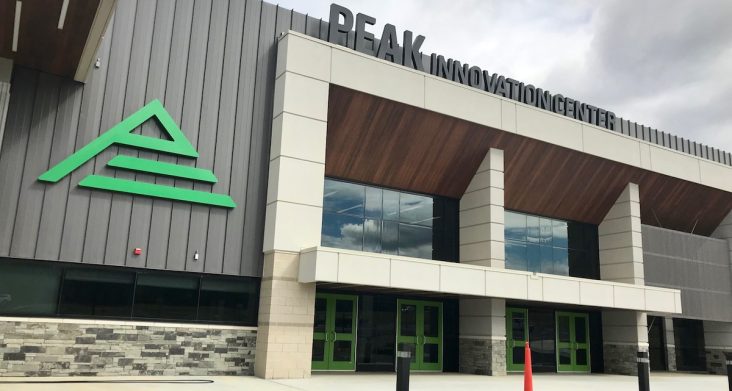Fort Smith Public Schools hire law firm in Peak Center flooding issue
by August 27, 2024 3:42 pm 711 views

The Fort Smith Public Schools Board of Education during its regular board meeting Monday (Aug. 27) approved the district hiring a Texas law firm to pursue potential lawsuits related to construction of the Peak Innovation Center.
Board members also received an update on construction projects to correct drainage issues at the district’s unique workforce development center.
Following an executive session, in which the school board had “a good discussion regarding pre-litigation and real property,” the board voted six to zero with board member Matt Blaylock recusing himself from the discussion and vote, to authorize FSPS administration to engage San Antonio-based Pearson Legal PC to advise the district on its potential claims related to the construction defects at Peak Innovation Center.
An independent investigation into flooding issues at Peak Innovation Center found that a lack of detailed plans for the building and multiple code violations caused problems with the rainwater drainage system that led to flooding. Envista Forensics, hired by the district to find out the cause of multiple instances of flooding at Peak, presented a report on their more than five-month investigation on March 26. At that meeting, Envista confirmed it did not contact any company associated with the project other than the school district as part of the investigation.
At least four of the firms involved with the planning and construction of Fort Smith Public School’s Peak Innovation Center, contacted the district after being asked if they wished to respond, in order to disagree with the findings.
Documents in response to that FSPS request, obtained through a Freedom of Information Act (FOIA) request from Talk Business & Politics, shows that the main architects, the project manager, the contraction manager at risk and another architect for the project disagreed with the Envista report.
FSPS has invested more than $20.363 million, including millage funds, public and private grants, and other sources of funding, in Peak, “a place where career and college-bound students develop real-world skills and earn industry-specific certifications to create a future workforce that will drive success across industry and beyond.”
The subject of an independent investigation into the flooding issues was broached after two companies involved with the construction of the center – Fort Smith-based Turn Key Construction, the construction manager at risk for the Peak project, and Halff Associates (formerly Morrison-Shipley Engineers, Inc.), engineers for the project – wrote letters to the school board raising concerns about the building and water issues. A June 1, 2023, letter from Halff to the school district noted that because of a “loss of trust with FSPS staff” they would no longer provide design services on the Peak project.
PROJECT UPDATES
Galen Hunter with MAHG Architecture Inc. updated the board on projects underway to remedy issues noted in the report. The work includes emergency roof drains identified as needed in the Envista report on the main part of the building where most of the classrooms are located, Hunter said.
“There are 14 roof drains across there, but they don’t have what we called emergency roof drains or scuppers, which are holes through the wall where if a drain gets clogged up, the water can go through the wall or an emergency roof drain,” Hunter said.
The least expensive option to remedy the problem would be to cut a hole in the wall and take a scupper out, Hunter said. However, there is a beam in the way, so MAHG suggested using emergency roof drains on the main roof. If any of the main roof drains clog, the water will go to the emergency roof drains. In those emergency roof drains, they are going to carry the water out through a cow’s tongue, he said
“What we do, instead of piping all the water out of those emergency roof drains underground where you’ll never see it, we turn the water out in a cow’s tongue or a sheep’s tongue out the wall above the grade. If we see water coming out of it, we’ll know that one of the main roof drains is clogged and we can go up and look at it,” he said.
This project, which is a continuation of the Peak drainage project phase one and two, addresses additional overflow drainage for roof drains located behind a parapet. It has an anticipated Fall 2024 completion of design for the project.
Phases one and two of the Peak drainage project have been bid and construction is ready to start, Hunter said. It is on track to be completed by the end of the year. Phase one is capturing all the roof water and phase two is dealing with it when it gets outside the building.
MAHG has spent the past two weeks coordinating with Arkansas Department of Transportation (ARDOT) on how the building drainage can tie into drainage work they are doing, he said.
“The highway department is doing a lot of work along the road there with a drainage ditch right in front of the building,” Hunter said.
